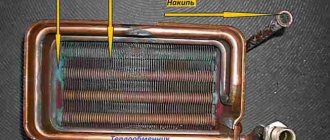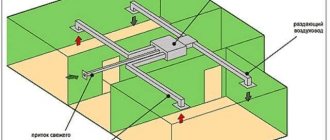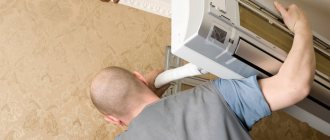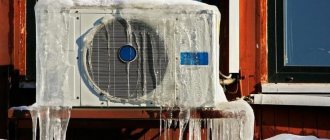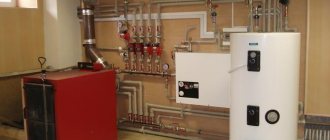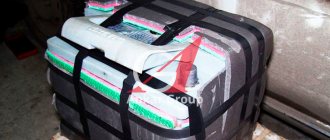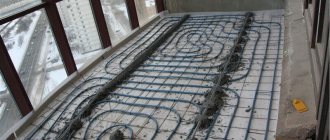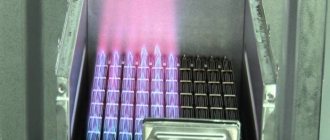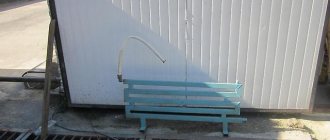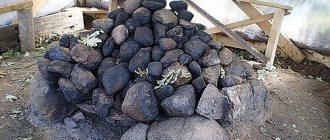Causes of pollution
We list only the main ones:
- If your air conditioner is constantly on, it becomes clogged with dirt from the air. These contaminants settle on both the external and internal units of the device.
- Due to moisture, mold and mildew develop inside the unit.
- If the external unit of the air conditioner is installed low from the ground, then pollution from street dust and exhaust gases inevitably occurs.
- During the season, poplar fluff becomes a real disaster for air conditioners, and often causes their breakdown.
- During operation, dirt, moisture, and dust invariably accumulate inside the unit. In addition, warm and humid environments often attract insects. Such “contents” negatively affect operation and often lead to breakdown of the split system.
If you do not clean the device on time, it will not only stop cooling the air, but will also begin to clog it.
A clean air conditioner successfully combats harmful pollutants that are present in the air of residential premises.
How to know when it's time to clean your air conditioner
Any air conditioner eventually begins to need cleaning. However, often inexperienced owners of miracle systems notice this fact too late.
We will talk about how to clean climate control equipment, which can be done independently.
Here are just a few “symptoms” that will indicate to you the need to clean the unit:
- The appearance of an unpleasant odor.
- Reduced device efficiency. Moreover, this does not mean that the air conditioner is completely turned off, but it stops maintaining the set temperature.
- Liquid is leaking from the internal unit of the device.
- When connecting to the power supply, noises uncharacteristic of an air conditioner are heard.
Taking into account our tips, you can clean the unit without difficulty.
Important: do not wait for all the “symptoms” to appear. If you observe at least one of the above signs, immediately begin cleaning the device.
Before you start cleaning the split system yourself, you need to carefully conduct an external inspection of it.
Consequences of improper dismantling
If dismantled incorrectly, it is easy to damage the air conditioner. Possible unpleasant consequences:
- Depressurization of the cooling circuit, which entails a freon leak. When installing the device later, you will have to pay extra to refill the system with refrigerant.
- Mechanical damage to the casing of the outdoor unit, freon pipes, and other parts.
- Cooling circuit clogged with debris, moisture penetration. When dust gets in, the compressor wears out faster. Water can oxidize the surface of the copper freon pipe, causing the entire system to fail.
- The outdoor unit falls from a height. The installation height of the module is not important - after it falls, it will have to be replaced in any case.
The air conditioner is usually dismantled when changing place of residence, during repairs and cleaning. When disassembling simple units, you do not have to understand their structure. However, full-fledged split systems require a careful approach. Since the equipment is expensive, it is better to turn to professional installers who will perform the work efficiently and with a guarantee. You can disassemble the device yourself only if you are fully confident in understanding its structure.
How to disassemble
Before you start cleaning, it is recommended that you read the instructions and understand exactly how your air conditioner is disassembled.
- Disconnect the device from the power supply;
- Remove the protective filter of the indoor unit, following the instructions exactly. Typically, this requires unscrewing the bolts under the plugs and carefully pulling the housing down;
- Remove the blades that direct the air;
- Remove the lower part of the block;
- Disconnect the electrical cord;
- Remove the drain tube and other electrical wires;
- Remove the housing of the internal electronic unit;
- Remove the drainage device and outlet hose.
Remember the procedure for dismantling, because after cleaning you will need to repeat it all, but in reverse order.
Cleaning air conditioning equipment does not take much time.
Precautionary measures
The process of dismantling and storing the air conditioner requires compliance with certain precautions:
- Start working independently with full confidence in your actions or leave such work to professionals.
- Use gloves and other protective equipment that can prevent burns and wounds.
- Entrust dismantling and transportation work to one organization, if you are not the one doing it. To carry out the work, enter into a binding contract.
- Save freon during dismantling, as refilling it is very expensive.
- When transporting the structure, you should apply the remote control to it and cover it in foam.
Cleaning procedure
Each split system unit needs special attention and an appropriate approach to cleaning. Do not use hard brushes or various metal objects, as you risk hopelessly damaging the unit.
Based on the number of main units of the split system, the cleaning procedure can also be divided into two stages: caring for the indoor unit and cleaning the outdoor module.
First you need to clean the air filters. It is not difficult to do this yourself at home. It is recommended to clean filters at least once a week. Dirt can be easily washed off if the filters are soaked for 30 minutes in warm water with added detergent. After soaking, these elements must be thoroughly rinsed and dried. Only after this can they be installed in the air conditioner.
The first step when servicing a split system is to clean the filtration elements.
Another important component that needs regular cleaning is the fan. Outwardly, it resembles a roller, with the help of which cold air is supplied to the room. It can be removed from the air conditioner or cleaned without dismantling. If you prefer the second option, then the blades are treated with a soap solution, washed off, and then run on low power to dry. During the cleaning process, debris may fall onto the floor, so cover the floor with newspapers and, if possible, remove carpeting.
It is necessary to understand that even a slight accumulation of dust and grease deposits can create problems in the functioning of the entire device.
Caring for the heat exchanger is the key to long-term and uninterrupted operation of your air conditioner. It is recommended to clean it at least once a year. To get to the mechanism, you need to remove the grille and remove dirt with a vacuum cleaner or soft damp cloth. This work will require increased care and attention, since both the mechanism and your hands can easily be damaged. When cleaning the heat exchanger, inspect it carefully.
If you notice traces of corrosion, it is better to immediately contact a service center, since subsequently all this can lead to a freon leak.
And in order to get rid of the unpleasant odor, you will have to carry out antiseptic cleaning. To do this, 0.5 liters of alcohol antiseptic (can be purchased at a pharmacy) is poured into a spray bottle and sprayed before the air conditioner is turned on. The droplets are drawn in and after a short time there will be no more unpleasant odor.
Mandatory at the final stage of servicing the split system will be the procedure for treating all parts with antifungal agents and antibacterial compounds.
Don't forget about the drainage system. A clogged drain pipe can be caused by either dust or mold. There are several cleaning methods:
- Pass the soap solution through the evaporator, it will help get rid of dust and grease;
- Blow out the disconnected drainage pipe with a vacuum cleaner. But this method is only possible if the system is not very clogged.
- The drain tube is completely disconnected, washed, and treated with a strong disinfectant (this is practically the only way to cope with severe contamination).
Chlorhexidine can be used as a disinfectant - a cheap but “working” drug, sold in any pharmacy. Well, in order to make sure that the cleaning gave the desired result, pour 1.5 liters of plain water into the drainage system. If everything is in order, the water will simply flow out.
You need to fill the system with a disinfectant, for example, chlorhexidine used in hospitals, approximately 4 bottles.
The outdoor unit gets dirty no less than the indoor unit. Not only dirt gets into it, but also plant pollen, fluff and even small branches. Clean it using a regular or washing vacuum cleaner. If there is free access to the outdoor unit, then it is better to remove the top cover and then there will be free access not only for a vacuum cleaner, but also for a rag with detergent. However, when rinsing the blades, be careful not to allow water to get into the electrical part of the device. By the way, the radiator, fan blades and condensate tray can be treated with a steam generator. This will give not only a cleaning effect, but also a disinfecting effect, which is also important.
The following tips for servicing your air conditioner yourself will provide practical assistance in keeping it constantly clean.
According to experts, you need to clean the split system once or twice a year: in spring and autumn. If the unit is used in a very polluted environment, then more often. By following simple recommendations, you can clean the air conditioner yourself without the help of professional technicians.
